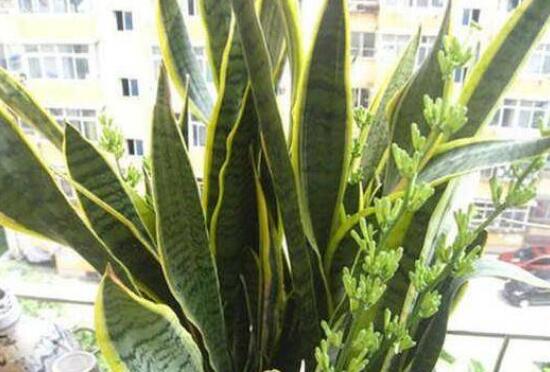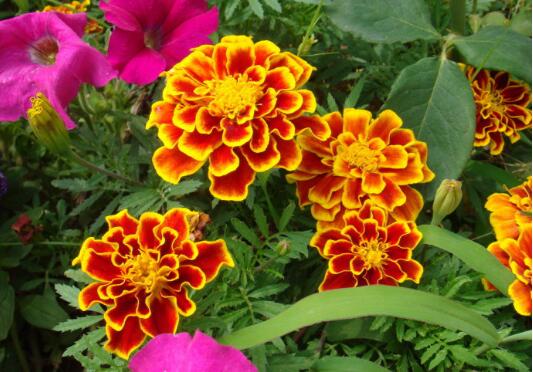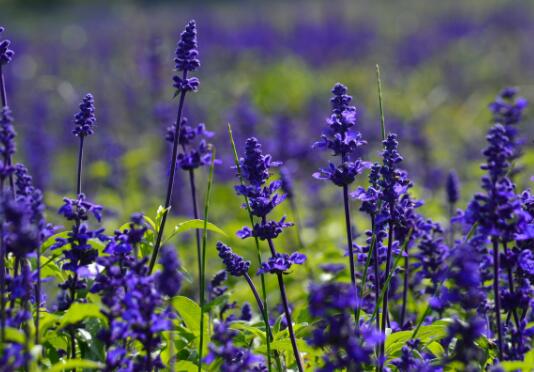Phnom Penh tiger skin orchid worm how to do, Phnom Penh tiger skin orchid disease and pest control / drug spraying
Phnom Penh Tiger Pilan, heard the name to know that it is a kind of Tiger Pilan, its characteristic is that the edge of the leaf is golden yellow, looks very beautiful. However, the beauty of Phnom Penh Tiger Pilan needs everyone to take good care of. Once it gets sick, it will destroy all this. What about Phnom Penh Tiger Pilan? The following is the pest control of Tiger Pilan in Phnom Penh. Let's take a look at it with the editor.
First, Phnom Penh tiger skin orchid long worm, spray with medicine

As a common foliage plant, the breeding method of Phnom Penh tiger skin orchid is not difficult, but because there are many newcomers, many of them do not maintain in accordance with the requirements, resulting in the symptoms of long insect disease, seriously affecting the ornamental of the plant. As for Phnom Penh tiger skin orchid worms how to do? In fact, it is very simple, find specific pests, and then aim at spraying.
II. Disease and insect pest control of Phnom Penh tiger skin orchid
1. Scale insects
In the case of proper water and fertilizer, Phnom Penh tiger skin orchid grows very luxuriantly, which is good, but if the room is not ventilated, for a long time, the plant will be vulnerable to shell insects. Symptoms of damage, plant leaves lose luster, golden change is also very dim, in severe cases, the whole plant will die.
Control methods: first, move the plant to a ventilated place, and cut off the diseased leaves to reduce the source of insects; when there are many shell insects, it is necessary to spray 1000 times of omethoate or 1500 times of malathion for control.
2. Mites (red spiders)
In addition to shell insects, mites are also one of the diseases and insect pests of Phnom Penh, among which red spiders are the most common. Symptoms: yellow and white spots appeared in Phnom Penh tiger skin orchid leaves, then gradually turned red and extended to the whole leaf, even causing the leaves to curl, withered and yellow shedding.
Prevention and control methods: after the red spider is found, it should be sprayed immediately. The medicament can choose 1500-2000 times of trichloropropanol EC or 1.8% acaridin EC 6000 times, spray once every 7 days, 2-3 times, the effect is good.
3. Slugs
After excluding shell insects and red spiders, slugs are generally the only insects that invade Phnom Penh tiger skin orchid. The insect is a kind of pest with complex feeding habits and large food intake, which will eat the leaves of Phnom Penh into holes and seriously affect the ornamental ability of the plant.
Control method: after the slug is found, the young cabbage leaves can be used for artificial trapping, or 6% Mida molluscicidal granule 0.5kg~0.6kg, mixed with dry fine soil, can be evenly sprinkled around the plant, and soon the slug will run away.
4. Leaf spot
In addition to the long worm, in the case of improper maintenance, Phnom Penh tiger Pilan will also get sick, of which the most common is leaf spot disease. Disease symptoms: in the early stage, the leaves appear nearly round or oblong spots; in the later stage, the disease spots fall off and perforate, and the disease spots near the ground are easy to rot, resulting in stem base rot or whole plant inversion.
Prevention and control methods: in peacetime maintenance, watering should be reduced to reduce soil moisture; when the above diseases are found, Bordeaux solution, 53.8% can kill 2000 dry suspension 1000 times liquid to spray, spray 2-3 times in a row, spray once every 5-7 days, one month effect can restore health.
5. Anthrax
One of the common diseases of Phnom Penh tiger skin orchid mainly occurs under the conditions of high humidity and muggy environment, stagnant water in flowerpots, poor ventilation and so on. Symptoms: Phnom Penh tiger skin orchid leaves appear yellow-brown and sunken spots, and then expand called dark brown round spots, the leaf tip withered, and then the whole plant died.
Prevention and treatment: cut off the diseased leaves and burn them centrally to reduce the source of the disease; in severe cases, spray 1000 times of carbendazim or 1000 times of methyl topiramate for antiseptic, which can be effective after 2-3 times.
Generally speaking, Phnom Penh tiger skin orchid is not difficult to raise, just put it in a ventilated place, and be careful not to pour too much water, it is not easy to grow insects and get sick. Of course, do not be afraid to find diseases and insect pests in Phnom Penh. You can solve them according to the above prevention and control methods. On the prevention and control of diseases and insect pests in Phnom Penh Tiger Pilan, the editor has introduced this, hoping to bring help to everyone.
What are the common diseases and insect pests of tiger skin orchid, and the control methods of tiger skin orchid diseases and insect pests
Tiger Pilan gives people the feeling of a green scene, full of vitality, not only Tiger Pilan also has the role of purifying the air, but in the process of breeding, there will always be some diseases and insect pests that affect the ornamental effect of Tiger Pilan. So what are the common diseases and insect pests of Tiger Pilan? The following is to introduce the prevention and control methods of diseases and insect pests of Tiger Pilan.
What are the common diseases and insect pests of Tiger Pilan?
Phnom Penh tiger skin orchid, also known as Phnom Penh tiger tail orchid, tiger skin orchid, millennium orchid, the main diseases are leaf spot, rot, bacterial soft rot, anthrax, sunburn, insect pests are shell insects, slugs, mites (red spiders).
Control methods of common diseases and insect pests in tiger skin orchid
Tiger skin orchid leaf spot
Harmful symptoms: mainly occurred in the leaves, leaf spots nearly round to oblong, the size of 8mm-10mm, light reddish brown, edge light yellow, slightly sunken, sometimes plaque fusion. When cutting leaves with a single ring, the upper part of the disease spot is easy to die. In the later stage, the lesion often falls off into a perforation. The disease of leaves near the ground often causes local rot, and in serious cases, it causes stem base rot or whole plant inversion. It is easy to get sick in high temperature and rainy season.
Prevention and control methods: reduce soil moisture. At the initial stage of the disease, Bordeaux solution, 53.8% can kill 2000 dry suspension 1000 times or 47% Garinon wettable powder 700x solution, spray 2-3 times in a row, once every 5-7 days.
Tiger skin orchid rot
Harmful symptoms: occur on the leaves. The disease spot is water-stained spot in the initial stage; after expansion, the disease spot is from round to irregular, dark gray, soft rot, slightly sunken; in the later stage, the disease spot is dry and sunken, grayish brown, the edge is reddish brown, and black mildew spots appear under wet conditions.
Control methods: change the basin soil in time or mix the soil with pentachloronitrobenzene, or spray the soil with soil fungicide; 50% carbendazim or 800 times thiophanate methyl solution can be sprayed at the initial stage of the disease.
Bacterial soft rot of tiger skin orchid
Harmful symptoms: after infection, the leaves changed from green to light yellow to grayish yellow, water-immersed soft rot appeared at the base of the stem near the ground, and the injured leaves were easy to fold in the later stage. The rhizome is infected with disease, showing grass yellow soft rot, and the root is rotten and withered. The roots also died in the form of black rot when they were flooded. Especially in spring and summer, the weather of high temperature and heavy rain and typhoon rain is more serious. The pathogen is caused by bacteria.
Prevention and control methods: keep more than 10 ℃ in winter and spring, control watering, and shade the hot weather in midsummer. The growth period of spring and autumn is prosperous, so we should increase the application of phosphorus and potassium fertilizer to improve the ability of disease resistance. It is best to choose disease-free soil or burning soil or after thermal sterilization before planting. Diseased leaves should be cut off and burned in time. At the initial stage of the disease, medical streptomycin sulfate 2000 times solution, 47% Garinon wettable powder solution or 30% green suspension solution can be selected and sprayed every 5-7 days for 2-3 times.
Anthracnose of tiger skin orchid
Harmful symptoms: anthrax disease spot begins at the leaf tip or leaf edge, brown, the spot surface appears obvious or not obvious wheel pattern, and the diseased leaf forms small black spots scattered or arranged regularly. The pathogen is a subphylum fungus, called Alternaria alternata. The high temperature in the south is favorable for the disease under shady and humid conditions, especially from April to June.
Control methods: cut off the diseased leaves and withered leaves in winter and spring, increase the application of phosphorus and potassium fertilizer, and spray 1000 times of 50% anthrax Fumi wettable powder in the early stage of the disease, or 1000 times of 75% chlorothalonil + 70% topjin wettable powder (1 ∶ 1).
Tiger skin Lanri burning disease
Harmful symptoms: there are unclear wrinkles and withering in the susceptible leaves, water accumulation in serious cases, necrosis in the diseased areas, yellowing and decay until the plaques dry up.
Prevention and treatment: from June to October to shade properly. It is necessary to strengthen ventilation or divert water to cool down. Plant leaves should not be sprayed with water around noon, so it is not easy to harvest plants at high temperature. Reduce mechanical damage during harvest.
Dendrolimus punctatus
Harmful symptoms: usually suck juice on the leaves or stems of tiger skin orchid for a living.
Prevention and cure method
Chemical control: when the shell of nymphs is not formed, spray with 1000 times of omethoate, 1500 times of malathion, 1000 times of imidophos, 1000 times of 50% dichlorvos, or 2.5% deltamethrin 3000 times. Spray once every 7-10 days, 2-3 times in a row.
Biological control: protect and make rational use of the natural enemies of scale insects such as Australian ladybug, red lady beetle, golden aphid wasp, soft scale wasp, red lip ladybug and so on.
Artificial control: in the process of cultivating flowers, there are shell insects on a leaf, which can be cut off and burned in concentration, and do not throw it at random.
Tiger Pilan slug
Harmful symptoms: feeding leaves into holes, affecting the value of goods. It is a kind of harmful animal with complex eating habits and large amount of food.
Prevention and control methods:
Chemical control: 6% Mida molluscicidal granule 0.5kg~0.6kg or 3% Miaoling granule 1.5kg~3kg per mu, mixed with dry fine soil and evenly sprinkled around the plant.
Biological control: sprinkle tea cake water bubbles (1:15) around the plant, or sprinkle soaked tea cake crumbs
Artificial control: slugs like to inhabit ditches and wetlands. A place where slugs like to live can be built, where slugs like food, such as young cabbage leaves, can be used as bait for artificial capture.
Tiger skin blue mites (red spiders)
Harmful symptoms: harm the leaves of plants, suck the stems and leaves of plants, and there are a large number of needle-sized yellowish-brown spots on the front of the leaves in the early stage. Sometimes it starts from the leaves in the middle of the plant, and the leaves turn yellow gradually.
Prevention and cure method
Chemical control: the ideal control effect can be achieved by using 1000-1500 times of triclofenac EC, 2000 times of 20% mifenjing wettable powder, 2000 times of 15% paracetamol EC and 6000 times-8000 times of paraben EC.
Biological control: protecting and increasing the number of natural enemies can enhance its control effect on jujube red spider population. The natural enemies are Chrysopa Sinica, mite-eating ladybugs and predatory mites.
Tiger Pilan disease and pest control Hello! Professor, Hu Pilan how to prevent diseases and insect pests, what is the disease of small pieces of rot in the middle of the leaves? Name: Wu Jiangming Unit: contact telephone number: 2010-03-23 expert answer Comrade Wu Jiangming: Hello, Tiger skin Orchid, also known as Tiger tail Orchid, Millennium Orchid, is a perennial evergreen herb of the tequila family. The following diseases often occur in production. First, anthrax disease spot begins at the leaf tip or leaf edge, brown, the spot surface appears obvious or not obvious wheel lines, the diseased leaves form scattered or regular small black spots. The pathogen is a subphylum fungus, called Alternaria alternata. In the south, the high temperature weather is favorable to the disease under shady and humid conditions, especially from April to June. The method of disease prevention: cut off the diseased leaves and withered leaves in winter and spring, increase the application of phosphorus and potassium fertilizer, and spray 1000 times of 50% anthrax Fumi wettable powder or 75% chlorothalonil + 70% tophan wettable powder (1 ∶ 1) in the early stage of the disease. 2. after the bacterial soft rot was infected, the leaves changed from green to light yellow to grayish yellow, and the water-immersed soft rot appeared at the base of the stem near the ground, and the injured leaves were easy to turn back in the later stage. The rhizome is infected with disease, showing grass yellow soft rot, and the root is rotten and withered. The roots also died in the form of black rot when they were flooded. Especially in spring and summer, the weather of high temperature and heavy rain and typhoon rain is more serious. The pathogen is caused by bacteria. Prevention and control methods: keep more than 10 ℃ in winter and spring, control watering, and shade the hot weather in midsummer. The growth period of spring and autumn is prosperous, so we should increase the application of phosphorus and potassium fertilizer to improve the ability of disease resistance. It is best to choose disease-free soil or burning soil or after thermal sterilization before planting. Diseased leaves should be cut off and burned in time. At the initial stage of the disease, medical streptomycin sulfate 2000 times solution, 47% Garinon wettable powder solution or 30% Lvde suspension solution can be selected and sprayed every 5-7 days for 3 times. Third, Fusarium spot disease, also known as leaf spot disease, the first to find a round spot in the leaves, the diameter can be expanded to 12 mm. Slightly sunken, light reddish brown, with yellowish edges. The disease spot is scattered, spread all over the leaf, and the central part of the spot dries up and falls off, forming a perforation. Several disease spots fuse with each other, and if the leaves are cut around, the disease will die above the disease. The pathogen is semi-known subphylum coccidiomycetes. It is easy to get sick in high temperature and rainy season. Prevention and control methods: reduce soil moisture. At the initial stage of the disease, Bordeaux solution, 53.8% can kill 2000 dry suspension agent 1000 times or 47% Garinon wettable powder 700x solution, spray 2 times 3 times, once every 5-7 days. The above is for reference only.
- Prev

What to do with the growth of malachite worms? pest control of malachite / 2 insect pests and 3 diseases
In the process of breeding peacock grass, the last thing we want to encounter is diseases and insect pests, this kind of problem is very harmful to the plant, which will not only affect the ornamental, but also lead to the phenomenon of death. What about the malachite worms? What should be done to control the diseases and insect pests of Peacock grass?
- Next

What about the worms of sage? control of diseases and insect pests of sage / 2 insect pests 2 diseases
When we cultivate sage, the last thing we want to encounter is diseases and insect pests, this kind of problem is very harmful to the plant, not only affect the ornamental, but also lead to the phenomenon of plant death. What about the worms of sage? How to control the diseases and insect pests of sage?
Related
- Fuxing push coffee new agricultural production and marketing class: lack of small-scale processing plants
- Jujube rice field leisure farm deep ploughing Yilan for five years to create a space for organic food and play
- Nongyu Farm-A trial of organic papaya for brave women with advanced technology
- Four points for attention in the prevention and control of diseases and insect pests of edible fungi
- How to add nutrient solution to Edible Fungi
- Is there any good way to control edible fungus mites?
- Open Inoculation Technology of Edible Fungi
- Is there any clever way to use fertilizer for edible fungus in winter?
- What agents are used to kill the pathogens of edible fungi in the mushroom shed?
- Rapid drying of Edible Fungi

